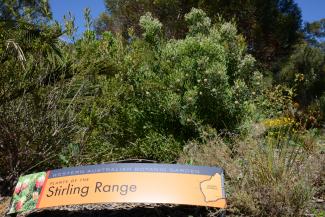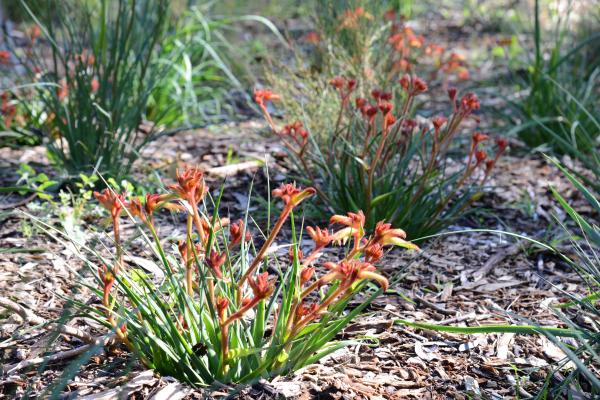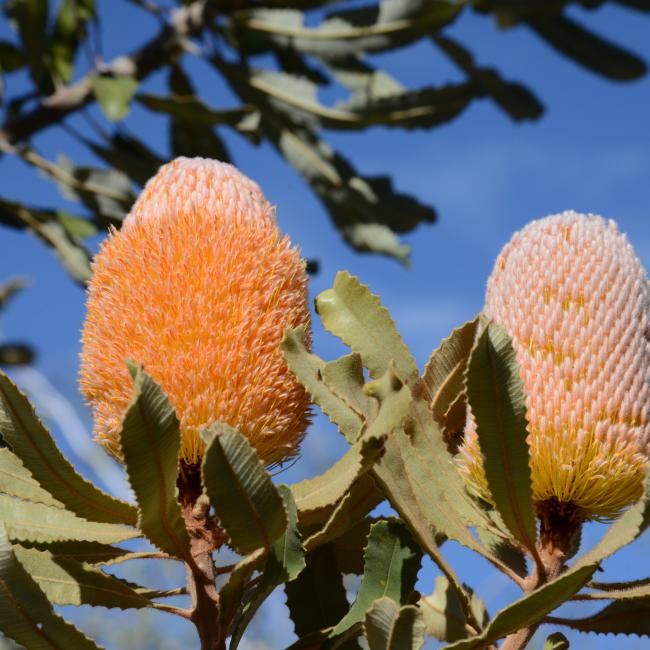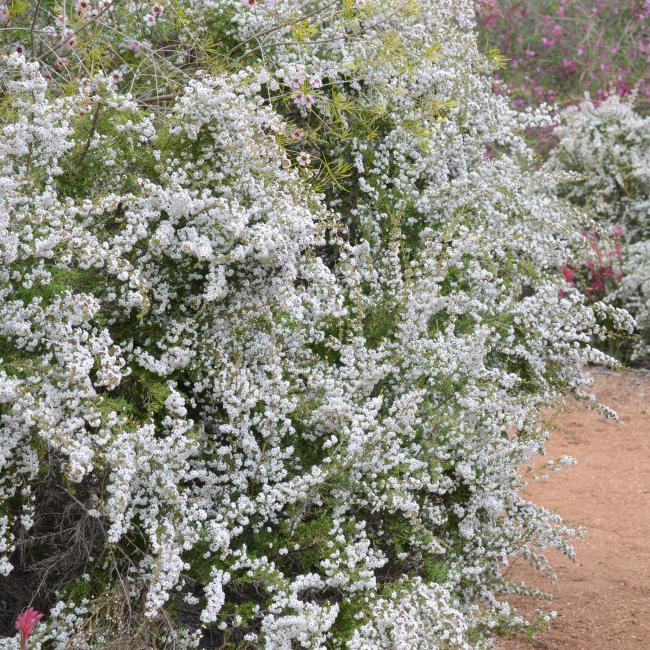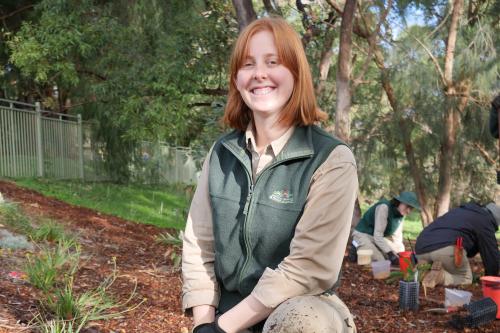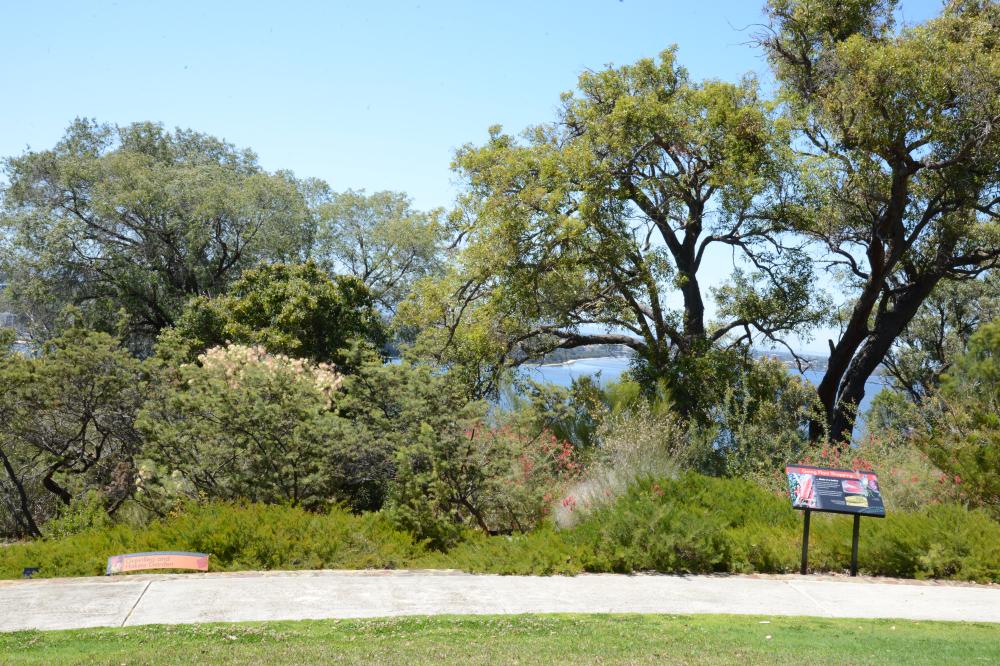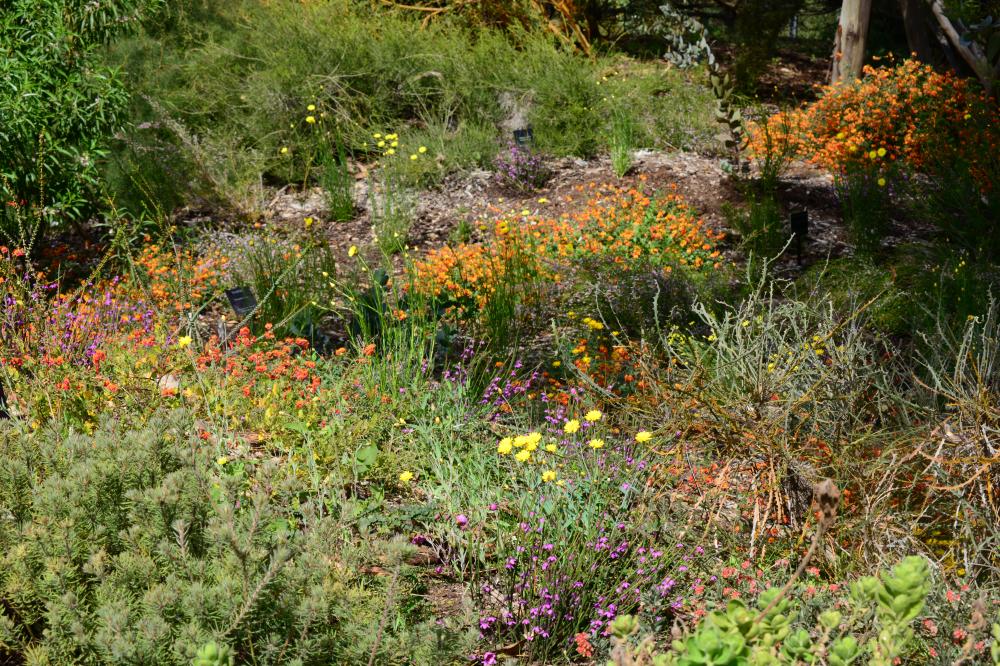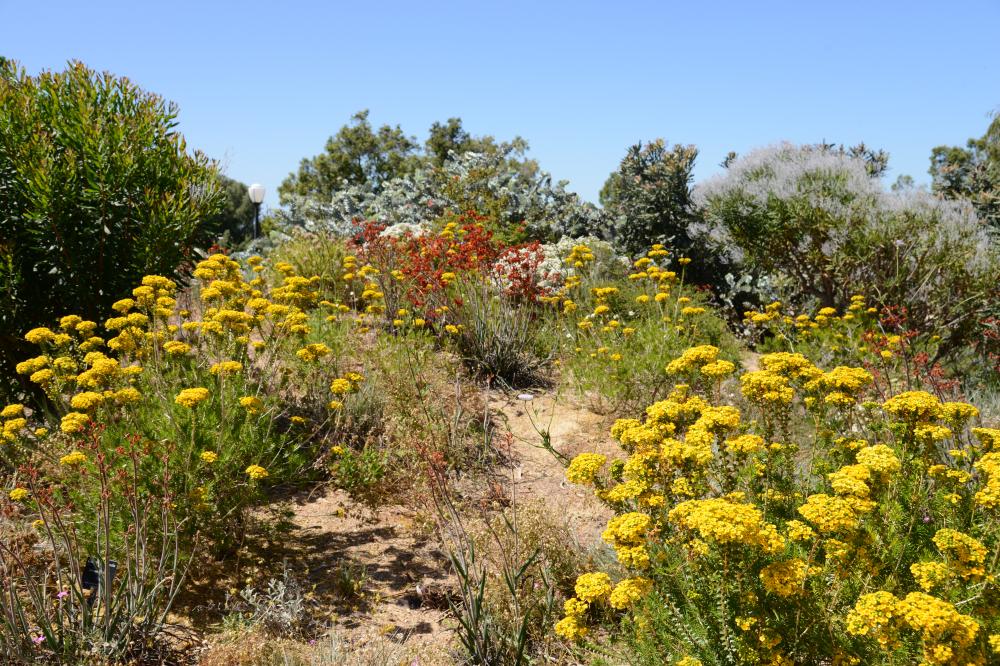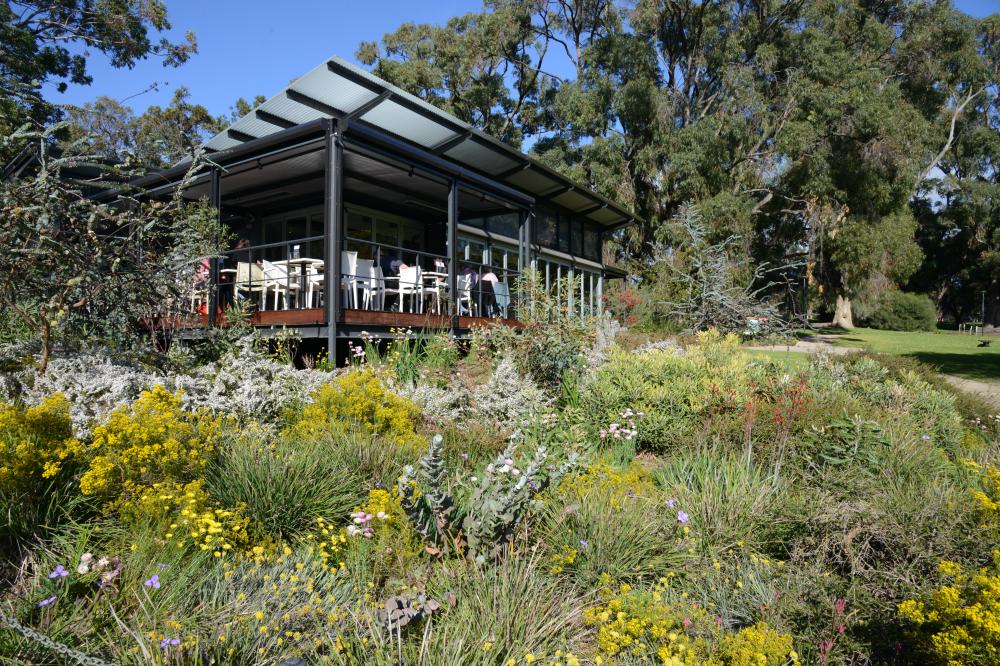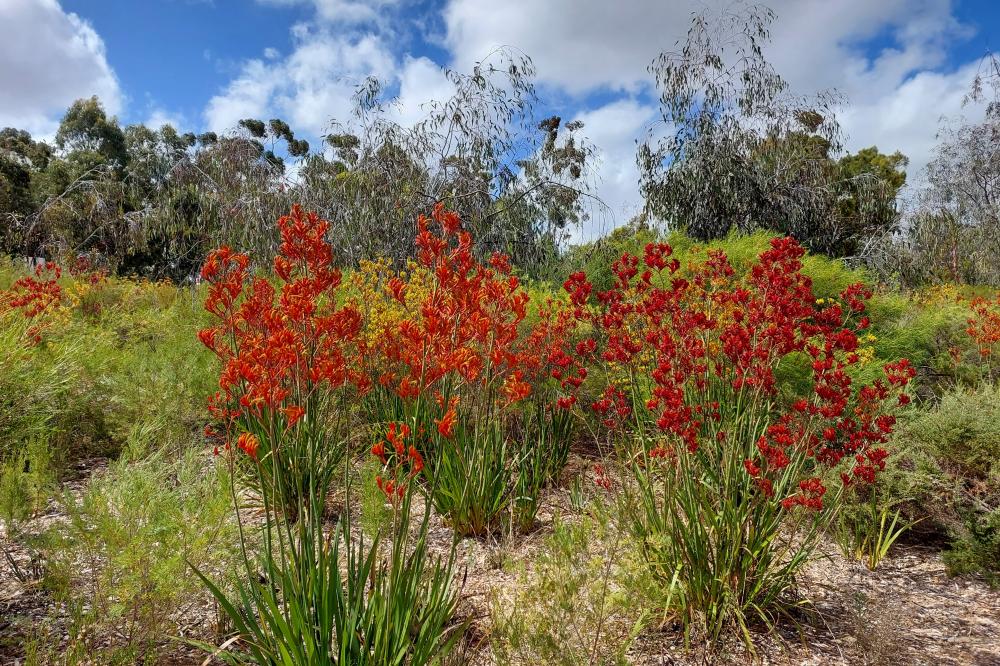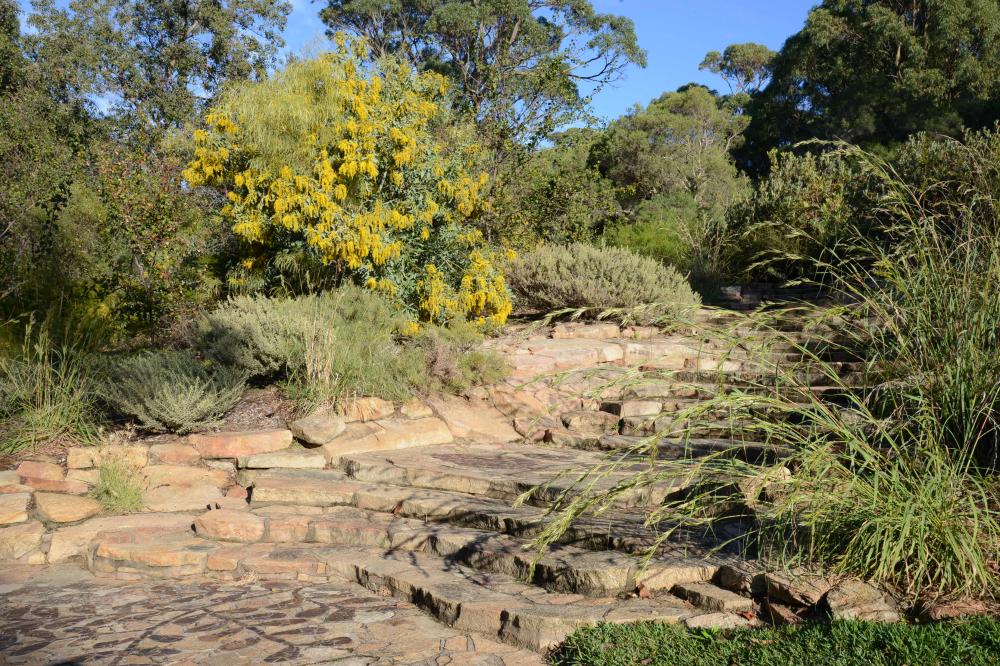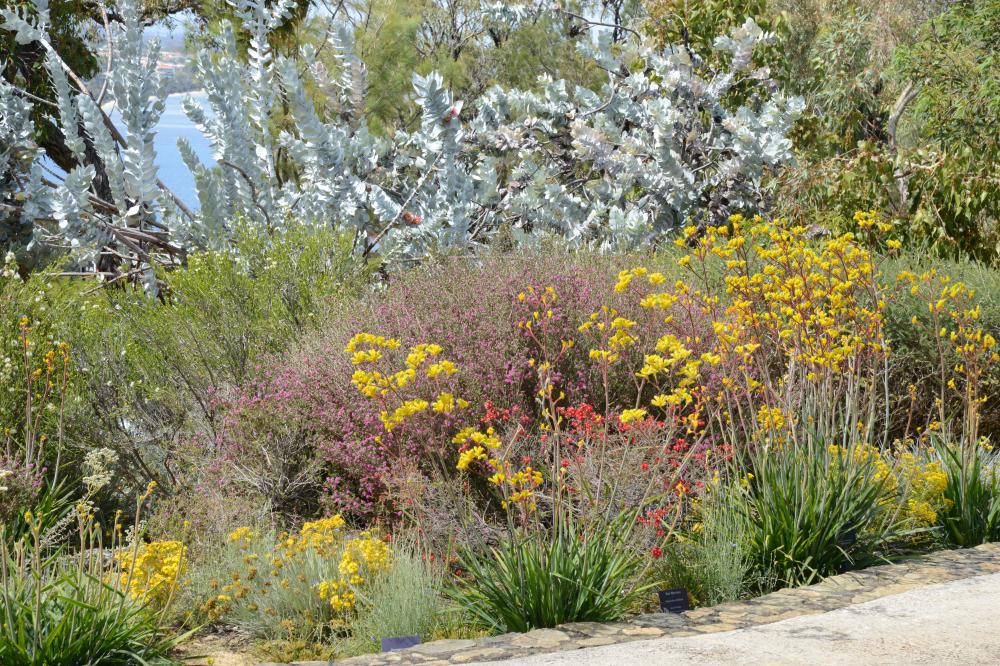Stirling Range Garden
The Stirling Range is one of the few mountainous regions in Western Australia.
Located 100km northeast of Albany and approximately 320km southeast of Perth is the series of rugged peaks that comprise the Stirling Range; the highest being the well-known Bluff Knoll at 1099m above sea level. With a mix of striking exposed cliff faces, deep, sheltered gullies and incredible views, the Stirling Range is home to some 1500 diverse and unique plant species, many of which are found nowhere else.
This collection displays a selection of unique species that captures a snapshot of the diversity and beauty of the Stirling Range. During winter and spring look out for the mountain bells Darwinia species, a number which are only found within the Stirling Range. In winter and spring the beautiful Banksia coccinea (scarlett banksia), Banksia formosa (showy dryandra) are flowering prolifically. There are many birds with chicks and the adjacent water garden is home to ducklings. As we move into summer the Nuytsia floribunda (Western Australian Christmas tree) and Banksia baxterii (Baxter’s banksia) begin to flower and the young birds become mobile.
The Stirling Range beds are home to many bird species. A particular favourite of the park is the New Holland honey eater. They are a small attractive bird covered in black and yellow feathers, with a long beak which helps them to catch insects and extract nectar from the likes of Banksia baxterii. You can often see these birds feeding in noisy flocks.
